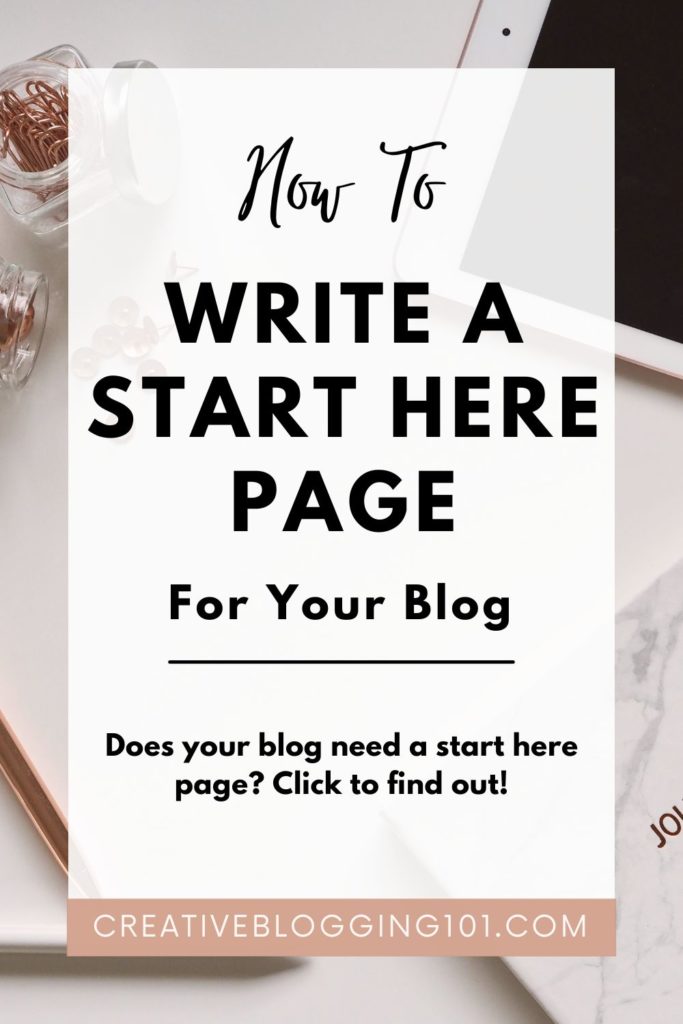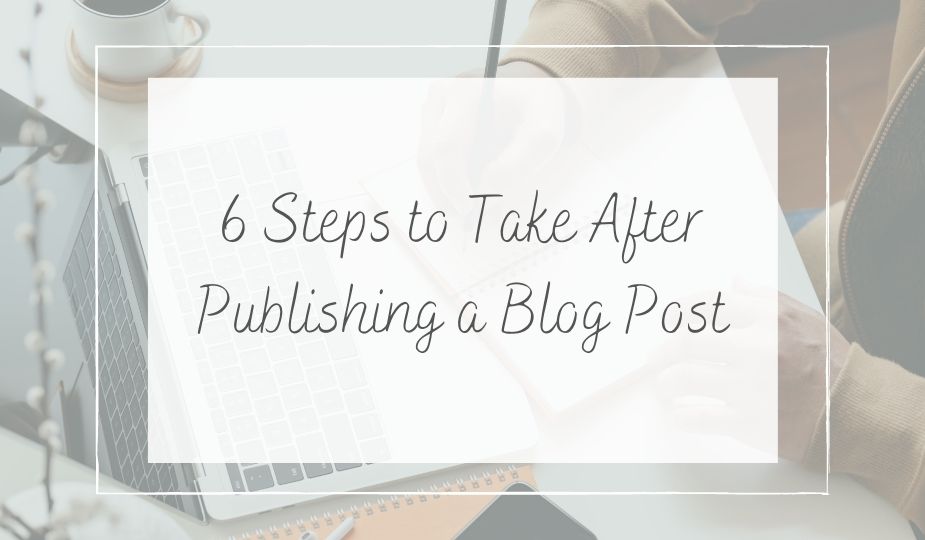A “Start Here” page, also sometimes called “Begin Here” or “[Your Blog Name] 101”, is a page on a blog that’s designed for new visitors. It’s kind of like a tour guide: it helps them navigate the blog’s content efficiently.
Here’s what a Start Here page offers:
- Introduction: A brief overview of the purpose of your blog, the topics you write about, and the value your posts provide to readers.
- Content Highlights: Includes your blog’s most popular posts, categorized by topic or theme. This lets new visitors find the topics they’re looking for easily.
- Navigation Guide: Blogs can accumulate a large amount of content over time, so a Start Here page can help readers understand how your blog is organized. It might explain categories, tags, or how to search for specific topics.
- Call to Action: This could be anything from subscribing to your blog’s email list to following you on social media.
The goal of a Start Here page is to improve the experience for new visitors by:
- Reducing bounce rate: Giving visitors a clear direction makes them less likely to get lost and leave the blog altogether.
- Increasing engagement: Highlighting your best content gets visitors hooked and encourages them to explore further. And possibly sign up for more so they never miss a post.
- Building a community: A Start Here page can also be a platform to introduce you and your personality, which proves you are a human that readers can relate to.
Basically, a Start Here page is a valuable tool for bloggers to make a good first impression and turn new visitors into loyal readers.

What’s the Difference Between a Home Page and a Start Here Page?
A home page is meant to catch attention. It let’s visitors know what you do and how you can solve their problems.
On the other hand, a start here page leads visitors in the right direction and draws attention to your best content.
How to Write a Start Here Page for Your Blog
Step 1: Make a memorable first impression.
The first line of your Start Here page must grab the attention of the reader immediately. Sometimes, readers will only look at this page so you only have a few seconds to grab their attention and keep them reading.
Create a headline that offers a solution to their problem, such as:
- “Are you dreaming of working from home and spending more time with your family?”
- “Have you tried to lose weight but find it impossible?”
- “Is your home filling up with too much stuff? Let’s unclutter together!”
Step 2: Create a human connection.
Be personal and vulnerable. People like reading stories about others that they can relate to. Don’t just share all of your achievements, add in some struggles you’ve encountered, too.
The idea here is to relate to your ideal reader on a personal level. Think of yourself as talking to a friend.
Be sure to include a photo of yourself, preferably one of you with a smile.
- Example: “Hi! I’m ___________ and I really enjoy ______________ but not ____________.”
Step 3: State who you are helping.
Be very clear upfront on exactly who your target audience is. If you’re trying to help bloggers learn how to make money, then someone who’s looking for recipes will know they can’t find any on your site.
Also, be sure to state the purpose behind your blog. Are you writing to educate, inform, entertain, solve a problem?
This is the step that is answering your reader’s questions: “What’s in it for me? What can you do for me?”
- Example: “Let’s cut to the chase: this blog is for you if you’re an aspiring blogger anxious to turn your passion into profit. Feeling lost in a sea of information on how to make money blogging? We’ve all been there. That’s why we created this resource – to guide you through the process, step-by-step.”
Step 4: Explain exactly how you are going to help.
After focusing on who you are going to help, state exactly how you plan to help them. What can you do for them that others can’t?
- Example: “I’ve been helping new and established bloggers build and grow a successful money-making website for 5 years.”
Step 5: Prove it.
Here is where you get to show off your credibility so you need to share visible proof of your expertise.
You can do this by sharing testimonials from clients, social proof (followers), blog traffic stats, income reports, academic or corporate background.
Another great way to prove your credibility is to share logos from big sites that you’ve collaborated with on your page.
- Example: “See what others are saying!” (Share a few testimonies.)
Step 6: Convert readers to subscribers.
Now you’ve made a personal connection with your readers and you have proven you can help them solve their problems.
By now they are loving you, but chances are they may not remember to come back to your site.
Include a call to action to get them on your mailing list. You can do this by adding a button that leads to a landing page or an embedded form on your contact page.
- Example: “Don’t miss out on valuable insights and the latest strategies. Subscribe to my email list for exclusive content, actionable tips, and inspiration delivered straight to your inbox. We offer a hassle-free unsubscribe option, so you’re always in control.”
Also add your social media links and ask readers to engage with you there. This will make you stand out as well as make you more memorable. And remember to be active on social media!
- Example: “Want more awesome tips and connect with a supportive community of fellow bloggers? Follow me on social media!”
Step 7: Show them your best content.
Make it easy for readers to find what they’re looking for by adding links to your most popular posts. You can also use thumbnail images for visuals.
- Example: “Readers also love these: (link to posts)!”
What Should I Put on My Start Here Page?
When thinking about what to put on your Start Here page, ask yourself these two questions:
- What do I want visitors to learn about when they find my website?
- How can I let visitors know they are in the right place?
Make a list of things that answer those two questions. Then ask yourself:
- Do these things add value to my audience and to myself?
- Can I organize these things to make them flow well together?
If the answer is “no” to either of these, then you’ve identified something that doesn’t belong on the page.
Here are some ideas of what to include:
- Featured opt-in: Make visitors feel welcome by offering them a free gift, such as a mini course, checklist, workbook, or anything else of value.
- Your most popular posts: Or a list of posts that new visitors would find most helpful while learning about your topic.
- Categories: Instead of a list of post, consider showing posts from specific categories. This lets visitors decide what they want to dig into first.
- About section: Your Start Here page is a great way to introduce yourself.
- Social media links: Make it easy for visitors to find and follow you on social media.
- Products and services: Keep this short and sweet because first timers aren’t likely to buy from you. They need to know they can trust you first.
Where Should I Put the Link to My Start Here Page?
There are four places on your website that are best for placing the link to this important page:
- In the top navigation bar on the left side: Since people read from left to right (in most languages), left is usually the direction the eyes go to first.
- In the sidebar
- A large call-to-action on your homepage
- Your welcome email
My best tips:
- Use shorter paragraphs that contain only 2-3 sentences to make your page easy to scan. Most of the time readers only read the first 2 sentences of a paragraph before moving on.
- Speak like a knowledgeable friend, not a condescending jerk. You want your readers to like you and find you friendly. This helps them connect with you. If you speak like a know-it-all and talk down to them they may not stick around very long.
- Tell your story in a relatable way. Use words that trigger certain emotions in your readers to make them feel your story is also their story.
Key Takeaways:
- A “Start Here” page acts as a tour guide for new visitors to your blog, helping them navigate your content and understand what you’re all about.
- This page can significantly improve the user experience by reducing bounce rates, increasing engagement, and fostering a sense of community.
- To write an effective “Start Here” page, focus on making a strong first impression, showcasing your credibility, and providing clear calls to action for readers to subscribe or explore further.
- Include elements like an introduction, content highlights, navigation guide, and links to your best content.
- Remember to prioritize scannable content, a friendly voice, and a relatable story to connect with your audience.





